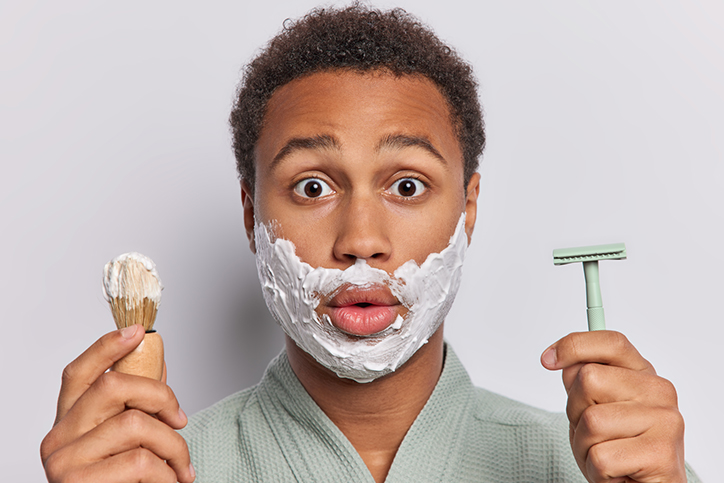
Shaving can leave your skin feeling smooth and fresh, but for many people, it can also lead to irritation, razor bumps, and ingrown hairs. While both issues are common after shaving, they’re often confused. Though they share some similarities, razor bumps and ingrown hairs have different causes and require different treatments. In this blog, we’ll break down the differences between razor bumps and ingrown hairs, and provide effective tips for preventing both.
Razor bumps, also known as pseudofolliculitis barbae, are small, irritated bumps that appear on the skin after shaving. They occur when hair is shaved too short or improperly and grows back into the skin, causing inflammation. Razor bumps are most commonly found on areas where the hair is curly or coarse, such as the neck, chin, and underarms.
Symptoms of Razor Bumps:
Razor bumps are typically caused by shaving against the direction of hair growth, using a dull razor, or shaving too closely, all of which can result in hair being cut below the surface of the skin. When this happens, the hair may curl back into the skin, causing irritation and bumps.
Ingrown hairs are hair follicles that become trapped under the skin, often resulting in redness, irritation, and bumps. Unlike razor bumps, which are typically a result of improper shaving, ingrown hairs can occur from a variety of causes, including shaving, waxing, or even friction from tight clothing. Ingrown hairs are more common in areas with coarse or curly hair, such as the beard area or bikini line.
Symptoms of Ingrown Hairs:
Ingrown hairs can occur when the hair is cut too short, causing it to curl back into the skin or grow sideways. It’s also more likely to happen when hair follicles become clogged with dead skin cells or oils, which can block the hair from growing outward.
Although both razor bumps and ingrown hairs can cause similar symptoms, such as redness, bumps, and irritation, there are key differences between the two:
Now that you understand the difference, here are some effective tips to prevent both razor bumps and ingrown hairs:
Exfoliation removes dead skin cells that can clog hair follicles and block hair growth, reducing the likelihood of both razor bumps and ingrown hairs. Use a gentle exfoliating scrub or a brush to slough off dead skin before shaving.
Always shave in the direction of hair growth to prevent cutting the hair too short or irritating the skin. Shaving against the grain can increase the risk of razor bumps and ingrown hairs.
A dull razor can tug at the hair, leading to uneven cuts and increased irritation. Replace your razor blades regularly and use a sharp blade for a smoother, more precise shave.
Before shaving, hydrate your skin with warm water and shaving cream to soften the hair and make it easier to cut. This reduces the risk of the hair being cut too short or getting trapped beneath the skin.
Avoid shaving too closely, especially in sensitive areas. A closer shave increases the likelihood of hair being cut below the skin surface, causing razor bumps and ingrown hairs.
Apply a soothing, alcohol-free moisturizer after shaving to calm the skin and prevent dryness. Aloe vera or tea tree oil can also help prevent irritation and reduce the chances of both razor bumps and ingrown hairs.
If you’re prone to razor bumps or ingrown hairs, consider alternative hair removal methods like waxing, depilatory creams, or laser hair removal. These methods can sometimes reduce the frequency of these issues.
While razor bumps and ingrown hairs can be frustrating, understanding the difference between the two can help you take the right steps to prevent them. By following proper shaving techniques, exfoliating regularly, and moisturizing your skin with products like Bump Stopper Arctic Shave Gel, Bump Stomper Razor Bump Treatment, you can significantly reduce your risk of both. If you’re dealing with stubborn ingrown hairs or razor bumps, it might be worth considering alternative hair removal methods or consulting with a dermatologist for advice. With the right care, you can keep your skin smooth and irritation-free!